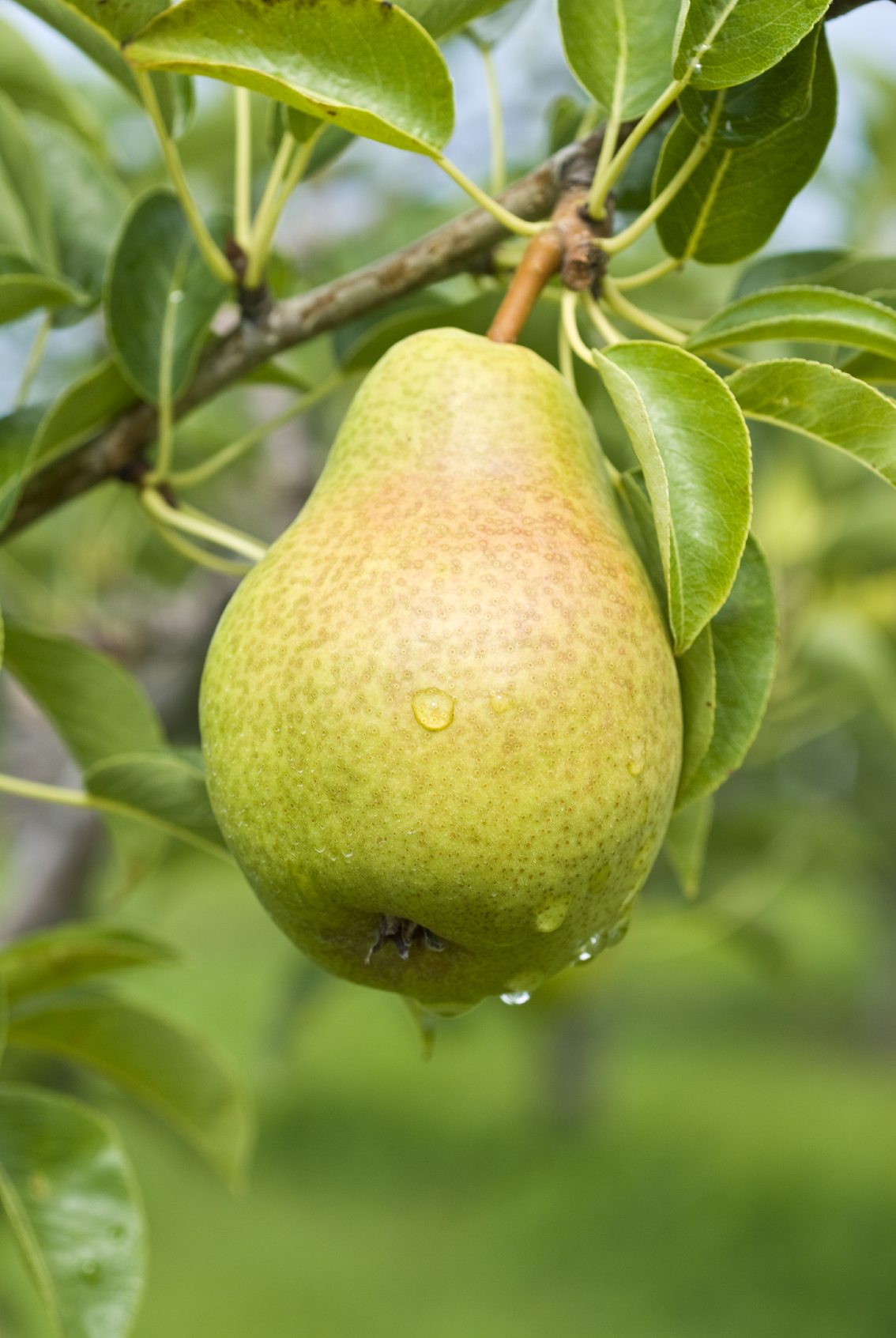Pear Tree Fertilizer: Tips On Fertilizing A Pear Tree

When conditions are optimal, pear trees are generally able to uptake all the nutrients they need through their root systems. That means that they must be planted in fertile, well-draining soil with a soil pH of 6.0-7.0 in full sun with a good amount of irrigation. Since life isn’t always perfect, however, knowing how to feed a pear tree and when to fertilize pears can make the difference between a healthy, productive tree and an ailing, low yielding tree.
When to Fertilize Pears
Fertilize pears prior to bud break if possible. If you have missed your window of opportunity, you can still fertilize until June. Don’t apply pear tree fertilizer in the late summer or fall. If you do, the tree will likely produce a whole bunch of new growth which will then be at risk of damage due to frost.
Fertilizing a pear tree will result in increased vigor, higher yields, and an increased resistance to pest and diseases. Testing your soil to see if it meets the needs of the tree will tell you if you need pear tree fertilizer. Since pears like a pH between 6.0 and 7.0, they like a slightly acidic soil. All fruit trees need nitrogen to promote growth and leaf production. Too much nitrogen, however, promotes lots of healthy foliage and less fruit.
Also, pears need several months prior to winter to harden off. If the pear has high nitrogen levels after midsummer, the process is delayed. If the tree is in a lawn area, reduce turf fertilizer so your pear doesn’t get too much nitrogen. Pears also need potassium and phosphorus, which with their extensive root systems, they are generally able to absorb sufficient amounts.
You may not need fertilizer for your pear trees. Pears have moderate fertility requirements, so if your tree looks healthy, you probably do not need to feed it. Also, if the tree was heavily pruned, don’t fertilize.
How to Feed a Pear Tree
The easiest method to use when fertilizing a pear tree is to use a balanced 13-13-13 fertilizer. Spread ½ cup (118 ml.) of fertilizer in a circle that is 6 inches (15 cm.) from the trunk and ends 2 feet (61 cm.) from the tree. You want to keep the fertilizer away from the trunk to prevent burn. Lightly work the fertilizer into the soil down to around ½ inch (1 cm.), and then water it in thoroughly.
Feed young trees monthly with only ¼ cup (59 ml.) through the growing season. Mature trees should be fed each spring with ½ cup (118 ml.) for each year of age until the pear is four and then consistently use 2 cups (473 ml.). Keep the area around young trees weed free and watered.
Gardening tips, videos, info and more delivered right to your inbox!
Sign up for the Gardening Know How newsletter today and receive a free copy of our e-book "How to Grow Delicious Tomatoes".
Fertilize them two weeks before they blossom in the spring of their second year and thereafter. You can also use ammonium nitrate as a fertilizer for pear trees. Use 1/8 pound (57 g.) multiplied by the age of the tree. Use less if you have very fertile soil already.
If the tree shows growth of more than a foot (31 cm.) in a season, cut back the fertilizer the successive spring. If leaves become pale green to yellowish in midsummer, add a bit more fertilizer the next year. Other fertilizer options should be applied at the rate of 0.1 pounds (45 g.) per inch (2.5 cm.) of trunk diameter measured one foot (31 cm.) above the ground.
Some of these include 0.5 pounds (227 g.) of ammonium sulfate, 0.3 pounds (136 g.) of ammonium nitrate, and 0.8 pounds (363 g.) of blood meal, or 1.5 pounds (680 g.) of cottonseed meal.

Amy Grant has been gardening for 30 years and writing for 15. A professional chef and caterer, Amy's area of expertise is culinary gardening.
-
 4 Superfast Composting Methods: Turn Waste Into Garden Gold In 30 Days Or Less
4 Superfast Composting Methods: Turn Waste Into Garden Gold In 30 Days Or LessTry the fastest composting methods to turbocharge your pile and transform kitchen scraps and garden waste into finished compost in just a few weeks.
By Mary Ellen Ellis
-
 Best Spider Plant Soil – Complete Soil Guide And Expert Tips For Keeping Plants Happy
Best Spider Plant Soil – Complete Soil Guide And Expert Tips For Keeping Plants HappySpider plants are fun and easy plants to grow, but what is the best soil for a spider plant? Selecting the right soil is important so they can thrive.
By Bonnie L. Grant